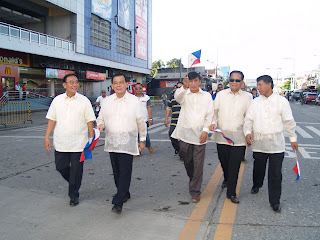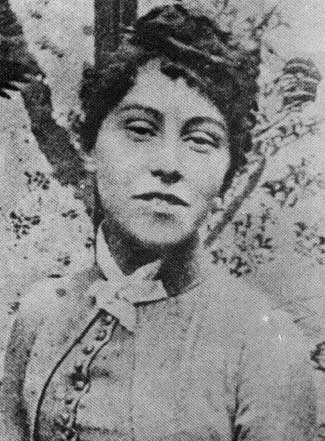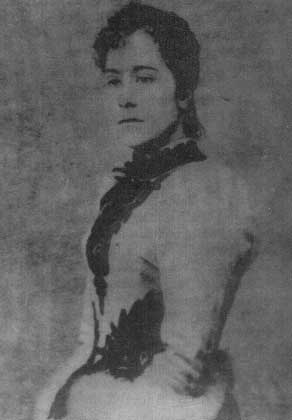By: VW Samuel P. Fernandez, Grand Historian
The untold story of our National Anthem is that the music and the lyrics came into being because of the inspiration and prompting of Freemasons.
Marcha Nacional Filipina
Armed with a letter of recommendation from Gen. Mariano Trias, music composer Julian Filipe had an audience with Gen. Emilio F. Aguinaldo on June 5, 1898.
The piano rendition of Felipe was euphonically pleasant to hear but Gen. Aguinaldo asked the talented composer for another martial air with patriotic fervor.
On June 11th, Felipe came up with a draft. Gen. Baldomero Aguinaldo and Gen. Mariano Trias, together with other revolutionary leaders, took time out to listen to the marching tempo of the composition and were pleased with the martial opus.
Professor Felipe would describe later his meeting with Gen. Aguinaldo, thus:
"General Trias, seeing (me), came into the room where they were assembled, and desiring that the
music requested by Don Emilio be heard by all, took (me) to the latter's presence; and although
they were then occupied with matters of greater importance, suspended their deliberation to hear
and pass judgment on the merit of the music which was to become later our national march."
"(I) played (my) composition on the piano, and was requested by those present to repeat it several
times for the purpose of better appraising and judging its merits."
"Then after a brief interchange of opinion, the gentlemen present resolved to officially adopt the musical
composition as 'Marcha Nacional Filipina', and Don Emilio Aguinaldo requested General Trias to see
that (I) go to San Francisco de Malabon for the purpose of teaching this new music to the town's band
which was selected to play it the following day, Sunday, June 12, 1898 on the occasion of the
Proclamation of Philippine Independence and the exhibition of our National Flag."
Marcha Nacional Filipina was first known as Marcha magdalo, then Himno Nacional Filipino. The martial air which had Asian, American, European, and Latin strains was replicated and sent throughout the country.
On June 12, 1898, Julian Felipe's martial-air composition excited the patriotic fervor of our compatriots who heard it, after the Aguinaldo standards had been unfurled and waved at Gen. Aguinaldo's balcony.
Bro. Jose Palma's Patriotic Outpouring
Julian Felipe was humbled by our patriots' adulation over his success but the Marcha Nacional Filipina had no lyrics. Then about the end of August 1899, Jose Palma, younger brother of Rafael Palma, thought of composing a poem to put words in the Marcha Nacional Filipina. He joined the Katipunan and worked with La Independencia, mouthpiece of the revolutionaries.
Palma entitled the lyrics Filipinas. The lyrics were done in Spanish, the language of the educated at that time. Palma was assisted by another brother Mason, Fernando Ma. Guerrero, poet and noted writer. Jose Palma, soldier-poet of the revolution, and writer Fernando Ma. Guerrero were staff members of the La Independencia, which had an editor, General Antonio Luna, a Mason.
According to our foremost historian, PGM Reynold S. Fajardo, we do not have any record if Jose Palma was a Freemason. However, writer Fernando Ma. Guerrero, regarded as the Prince of Filipino Poets writing in Spanish joined Logia Rizal and later Sinukuan Lodge. After his stint in the La Independencia, Guerrero became Editor of La Opinion and later El Renacimiento.
Gen. Antonio Luna was a gifted writer and propagandist. He co-founded Logia Solidaridad No. 53 in Madrid and a Triangle in Paris.
Jose Palma's lyrics were published in La Independencia on Sept. 3, 1899. The lyrics were such a hit that soon Filipinos were singing the hymn that survived the establishment of the American administration.
Rafael Palma, who became Grand Master of the Grand Lodge of the Philippines in 1920, wrote how the lyrics of the National Anthem came about, thus :
"During the leisure hours allowed by the daily and especially at night after the day's work, the members of the staff of La Independencia, seeking to amuse themselves and to be relieved from their physical weariness, used to assemble together and sing or play on musical instruments. Their souls afflicted by the military situation, which was growing worse every day, needed spiritual elation, and they found it in singing war tunes and martial songs which made them forget the bitterness of a sad reality..."
"It was in one of those occasions that Jose Palma saw the necessity of writing a poem for the words of the Marcha Nacional Filipina. Although this march was known since the beginning of the revolution and was hummed by everybody, it had not yet then any words accompanying it. To suit its music, he wrote a poem Filipinas, which was published for the first time in the issue of the first anniversary of La Independencia on Sept. 3, 1899. the spirit of his verses glowed with an optimistic faith in the future because (then) it was the general belief that it would be impossible for the American forces to dominate the entire archipelago."
Filipinas was written when Gen. Emilio Aguinaldo was leading a battle against the Americans. It took a nationalist paper, La Independencia, to publish the poem. La Independencia was declared by the Americans illegal. The printing of the paper was done in several places. There was a time that La Independencia was printed inside the train used by the Filipino revolutionaries. So Filipinas was written in blood.
Jose Palma's Filipinas lyrics may be outdated, antiquated and forgotten, but its Spanish patriotic outpouring cannot be gainsaid. Here is Palma's Filipinas:
Tierra Adorada
Hija del sol de Oriente,
Su fuego ardiente
En ti latiendo esta.
Tierra de amores!
Del heroisma cuna,
Los invasores
No te hollaran jamas.
En tu azul cielo, en tus auras
En tus montes y en tu mar
Esplende y late el poema
De tu amada libertad.
Tu pabellon, que en las lides
La victoria ilumino,
No vera nunca apagados
Sus estrellas ni su sol.
Tierra de dichas, del sol y de amores,
En tu regazo dulce es vivir.
Es una gloria para tus hijos,
Cuando te ofenden, por ti morir.
Lane, Osias and Laubach's English Translation
In 1916, the Department of Public Instruction declared English to be the official language of instruction. American teacher Martha Lane, in collaboration with Dr. Camilo Osias (Grand Master of Masons in 1955), and another brother Mason, the Rev. Dr. Frank Laubach (missionary), made the translation in English in 1920. The translated National Anthem was officially adopted in 1934 and was sung in schools during flag ceremonies during the presidency of Manuel L. Quezon (Grand Master of Masons in 1918).
MW Camilo Osias was initiated, passed, and raised in Bagumbayan No. 4 in August 1918. He became Worshipful Master of his Lodge in 1948 and Grand Master of Masons in 1955. He entreated his brethren to have MORE MASONRY AMONG MASONS, MORE MEN IN MASONRY.
The Rev./Dr. Frank C. Lauback was a member of Benton Lodge No. 667 and was a 32 degree Scottish Rite Mason. On October 27, 1934, Laubach and 17 other Masons petitioned the Grand Lodge to organize a Lodge in Dansalan. Eventually, Maranaw Lodge No. 111, with Laubach as a charter member, came into existence.
Grand Master Manuel L. Quezon was initiated on March 17, 1908, passed to Fellowcraft on May 18, 1908 and raised to the sublime degree of MM on May 23, 1908 in Logia Sinukuan No. 272 under the Grand Logia Regional de Filipinas (Now Sinukuan Lodge No. 16). PGM Quezon was largely responsible for the unification of Spanish and American Lodges in 1917.
Following is the English version of our National Anthem.
Land of the morning,
Child of the sun returning,
With fervor burning,
Thee do our souls adore.
Land dear and holy,
Cradle of noble heroes,
Ne'er shall invaders
Trample thy sacred shore.
Ever within thy skies and through thy clouds
And o'er thy hills and sea,
Do we behold the radiance, fell the throb,
Of glorious liberty.
Thy banner, dear to all our hearts,
Its sun and stars alight,
O never shall its shining field
Be dimmed by tyrant's might!
Beautiful land of love,
O land of light,
In thine embrace 'tis rapture to lie,
But it is glory ever, when thou art wronged,
For us, thy sons, to suffer and die.
The National Anthem in Filipino
President Ramon Magsaysay is credited with having the National Anthem sung in the native language. The official Filipino version was translated by Brother Masons Ildefonso Santos and Julian Balmaceda (Pintong Bato and Senior Grand Lecturer), and on May 26, 1956, the Filipino verson was proclaimed.
Some revisions were made in 1962 to which we owe our present translation. Below is the patriotic outpouring of our forebears:
Bayang magiliw
Perlas ng Silanganan
Alab ng puso sa dibdib mo'y buhay
Lupang hinirang duyan ka ng magiting
Sa manlulupig di ka pasisiil.
Sa dagat at bundok
Sa simoy at sa langit mong bughaw
May dilag ang tula
At awit sa paglayang minamahal.
Ang kislap ng watawat mo'y
Tagumpay na nagniningning
Ang bituin at araw niya
kailan pa ma'y di magdidilim.
Lupa ng araw ng luwathati't pagsinta
Buhay ay langit sa piling mo.
Aming ligaya na pag may mang-aapi
Ang mamatay nang dahil sa iyo.
Final Comment
The music and the lyrics of our National Anthem no doubt came about when our forebears fought for their freedom and independence, but its patriotic message transcends their time. Patriotism is in the heart of the nationalists who love their country.
The involvement of Freemasons in the development of our National Anthem is more than a coincidence. The message is clear: Freemasons love Freedom, and the National Anthem bears the imprint of their devotion.
source: The Cabletow - May - July 2005 / Vol. 82, No. 1
- - - - - -
"History had demonstrated that the most botable winners usually encountered heart-breaking obstacles before they triumphed. they won because they refused to become discouraged by their defeats." - B.C. Forbes







